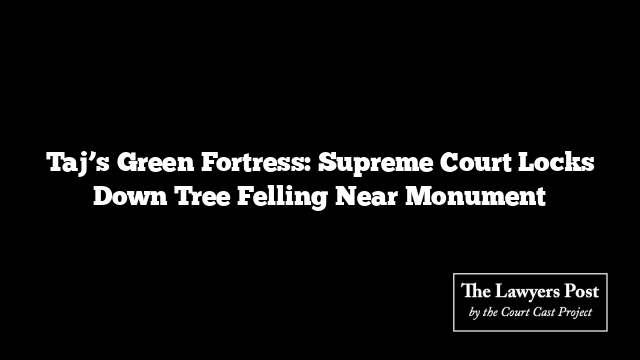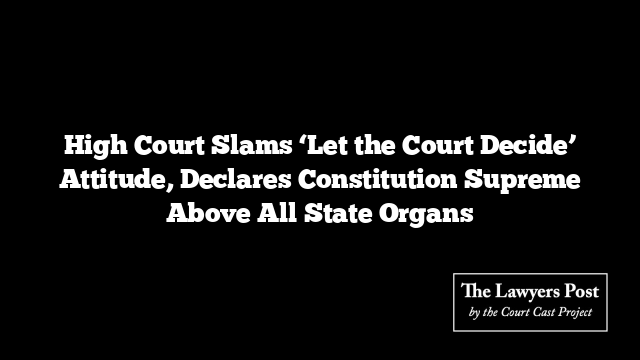In a firm reaffirmation of its environmental watch over the Taj Mahal, the Supreme Court has shut the door—again—on tree felling within a 5-kilometre radius of the iconic white marble monument. No matter the number—be it one or fifty—no axe will swing near the Taj without the Court’s blessing.
The two-judge bench, composed of Justices Abhay S Oka and Ujjal Bhuyan, made it crystal clear: their 2015 directive still holds. If it’s within that 5 km aerial zone of the Taj, no trees go down unless the top court says so. No loopholes. No shortcuts.
This buffer lies at the heart of the Taj Trapezium Zone (TTZ), a 10,400 square kilometre stretch carved out specifically to guard the Taj and other historic marvels in Agra against ecological erosion.
But the Court didn’t stop at reiteration. It zoomed out to address tree cutting in the broader TTZ as well. Outside the 5 km inner circle, the power shifts slightly—to the Divisional Forest Officer or the Central Empowered Committee—but the rules remain tight. Afforestation first, chainsaws later.
And forget clever exceptions. The only way to skip ahead is if lives are on the line—literally. Only in “grave urgency,” where human life is at risk, may felling proceed without prior approval.
The Court also directed the CEC to consider whether this rigid green curtain should extend beyond the Taj to other heritage hotspots like Agra Fort and Fatehpur Sikri.
Meanwhile, a trust hoping to fell trees on private land for “agro-forestry” ran into a judicial brick wall. The Court wasn’t buying the idea that agricultural ambition justified environmental looseness. A proposed registry for such projects was rejected out of hand.
The Justices warned: allow one loophole now, and you unravel over four decades of protective orders dating back to 1984. A misstep here, they said, would turn the TTZ into open season for deforestation.
The roots of this ruling go back to March 2025, when the Court reversed a 2019 exemption for agro-forestry, citing confusion and misuse. At the time, Justice Oka had bluntly stated what many had tiptoed around: “No one knows what agro-forestry means.”
Now, the matter awaits the CEC’s report. But one message from the bench echoes louder than the sound of any falling timber: when it comes to the Taj Mahal, nature gets the final word.





